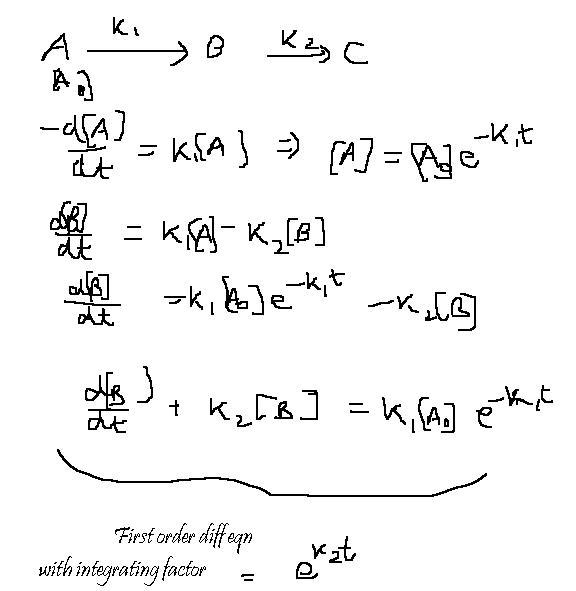??
Q. A radioactive nuclide A_{1} with decay constant \lambda _{1} transform into a radioactive nuclide A_{2} with decay constant \lambda _{2}. Assuming that at the initial moment the preparation contained only the radio nuclide A_{1}, then the time interval after which the activity of the radio nuclide A_{2} reach its max. value is ___
A-> A_{1} \rightarrow A_{2}\rightarrow A_{3}
-\frac{dA_{1}}{dt} = \lambda _{1}A_{1}
\frac{dA_{2}}{dt} = \lambda _{1}A_{1} - \lambda _{2}A_{2}
\frac{dA_{3}}{dt} = \lambda _{2}A_{2}
A_{1,t} = A_{1}e^{-\lambda _{1}t}
the given question indicates that
d(A2)/dt = 0
=> \lambda _{1}A_{1}=\lambda _{2}A_{2}
iske baad??
-
UP 0 DOWN 0 2 3

